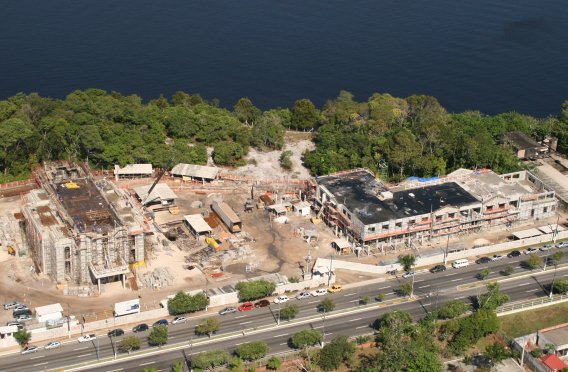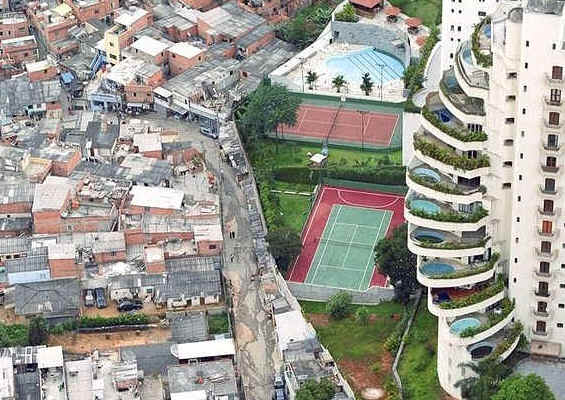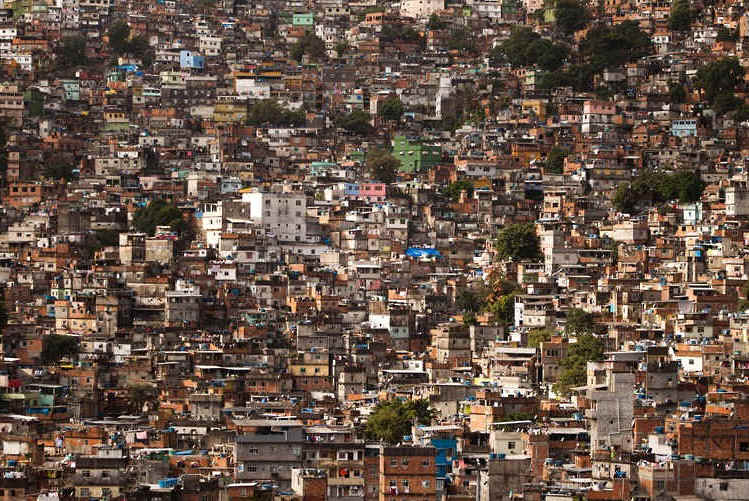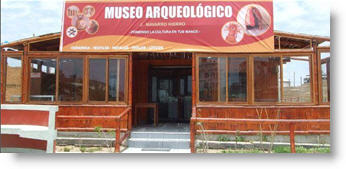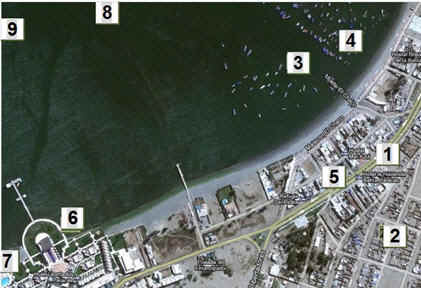he
best way to start this piece is with a caveat that we’re all
writers. Just as we’re all speakers (of whatever language),
we’re all writers (of whatever language)—with the exception of
those who (for whatever reasons) are illiterate (in whatever
language). Sounds like linguistification, but it isn’t. As a
professor of English, I’ve encountered (and continue to encounter)
people who lament the fact that they don’t know how to write. I
assuage them by assuring them that they really know how to
write—that it takes practice and a helping hand. I qvell
when I see the students in my freshman Composition and Rhetoric
classes turning out good writing, especially after they’ve
lamented on the first day that they didn’t know how to write. They
won’t turn out Shakespearean-polished prose at the end of the
first semester in English 101, but with lots of dopamine from me
they turn out essays that communicate sufficiently well their
thoughts, sentiments, and opinions on a variety of topics. So far in
my five years at Western New Mexico University, three students of
mine have been published: one undergraduate from my English 102
class, a graduate student from one of my graduate classes, and three
faculty Ph.D.’s from my Faculty Development Class.
As
for me, my first efforts at writing began at my mother’s knees,
sitting there as she read story after story (in Spanish) to me,
pausing to comment on the illustrations and the letters. Afterwards
she would sit me at the kitchen table and instruct me on how to make
the letters in the book as I copied the stories (in Spanish) on
blank paper. It seems to me that before long I was writing well
enough to make up my own stories with my dog Chata as the main
character.
Chata
was a waif, the runt of her litter, fuzzy-haired with many colors.
She would lay beside me on the floor when I wrote about her. When I
finished a story, I would read it aloud to Chata. Ever watchful, my
mother would hear my stories as I read them to Chata, and sometimes
my mother would poke her head toward me asking me to repeat some
part of the story. That encouragement drove me all the more to
write. I was literate in Spanish by the time I started first grade
in the segregated schools of San Antonio, Texas, in 1932.
Despite
the fact that I struggled with the English language and repeated the
first grade, I kept on writing in Spanish. Our teachers did not seem
to grasp the connection between literacy in Spanish and second
language acquisition. For some time now I’ve characterized that
inability to grasp that connection to the teachers’ belief in the
acoustic theory of language—they believed that the sounds of the
English language wafting through the classroom would reveal their
meanings to the students as soon they reached the students’ ears.
By the 4th grade I still had not gotten the hang of the
English language so I was held back another year. By the time I got
to the 9th grade I was already 2 years older than my
cohort, so I quit school after completing the 9th grade,
and when I turned 17 joined the Marines that August during the dark
days of 1943 when victory in World War II was far from certain.
In
high school I tried my hand at writing poetry in English. In the
Spring of 1943 my poem “The Gift” was published in Twinings,
the literary magazine of Scott High School in North Braddock,
Pennsylvania, where I was living at the time. After my wartime
service in the Marines I enrolled in 1948 as a provisional student
at the University of Pittsburgh where I took up the study of writing
seriously with the help of Abraham Lauf who got me through Freshman
English.
I
was accepted as a provisional student at Pitt because at War’s
end, Pitt Chancellor Fitzgerald had decreed that any honorably
discharged military member would be welcome at Pitt regardless of
academic background. In the Fall of 1948, the Veterans
Administration placed me at Pitt with only one year of high school.
I signed up for courses in Chemistry, History, Freshman English, and
2 courses in Spanish.
At
the end of the semester I wound up with A’s in the Spanish courses
but F’s in Chemistry, History, and English. My GPA was in the
cellar (1.5). I was advised that in order to enroll in the Spring
1949 semester one of those F’s would have to be a D at least—the
lowest passing grade. The Chemistry and History profs turned me
down. But Abraham Lauf, my Freshman English prof heard me out.
Sympathetically because I was an ex-GI, professor Lauf agreed to
look at my work again, explaining that he wasn’t promising
anything—that if my work merited it he would change the F to a D.
A
couple of days later, Abraham Lauf notified me that he could in good
conscience give me a D for the course. In the Spring semester of
1949 I signed up for professor Lauf’s second semester English
course. I earned a D for the course (let me stress the word
“earned”). I’ve often wondered if this act of kindness on
Professor Lauf’s part influenced my pursuit of the Ph.D. in
English.
Well
into the start of Professor Lauf’s sophomore course on
description and narration, I was despairing of earning anything better
than a “D” on the assignments I was turning in. My papers fairly
dripped of red ink that covered them with his critical remarks and
comments. “He expects us to write like pros,” I thought.
“That’s not fair! He thinks he’s still editor of Redbook
or whatever magazine he worked at before the war. I’ll confront
him.” After all, I had been a Marine Corps sergeant.
He
listened to my complaint, nodded sympathetically (I thought),
then, when I was through, he said matter-of-factly, unintimidated by
my presentation, “Perhaps you should drop the course, Mr. Ortego.”
That was it! He dismissed me with a challenge that not only got my
dander up but also got my “Mexican” determination up.
Needless
to say, I didn’t drop the course. I worked harder. And the harder
I worked, the more red ink poured from Professor Lauf’s pen. About
midway through the course I got the hang of the craft. But that
didn’t stop the red ink. I learned that the better I wrote, the
more he had to say. The more potential he thought you had, the more
he expected from you. And he made us work to the full potential he
thought each of us had.
I
got a “B” from him that semester, and learned the “art of
red ink,” which has characterized my own teaching of writing. I
took three more creative writing courses with Professor Lauf. In the
meantime I did well on the Pitt newspaper and had my first short
story published in the student literary magazine.
More
importantly, however, I learned from Abraham Lauf that when things
get tough one stays the course; and that what is not fair is not
working to the full measure of one’s potential. I’ve often
wondered if Abraham Lauf had not been a Marine Corps sergeant
himself. Perhaps a drill sergeant.
There
were other teachers, of course, who influenced my intellectual and
cognitive development, but “Abe” Lauf is the teacher I
remember best and the one who had the most impact on my life as a
writer. I’m sorry now I didn’t stay in touch with him—and even
sorrier I never told him while he lived how important he was in my
life. I did, however, have an opportunity to honor him with a
memorial essay in A
Celebration of Teachers published by the National Council of
Teachers of English in 1986.
The
University of Pittsburgh nurtured me. It gave me confidence in my
intellectual development and in my skills as a writer. Upon
completion of Advanced ROTC in 1952, at graduation exercises I was
commissioned a 2nd Lieutenant in the Air Force Reserve.
That summer I worked as an intern at the Pittsburgh
Post-Gazette. In the Fall, the New World Society of Pittsburgh
published a chapbook of my poetry entitled The
Wide Well of Hours, an honor which I have come to consider a success
d’estime which would carry me far as a poet until I found my
voice as an essayist.
fter
Pitt I pursued a career as a teacher and writer, the latter with
astonishing cumulative success, publishing poetry, fiction, and
critical studies as well as placing pieces in national and
international magazines and journals like The Nation, Saturday
Review, The Center Magazine, the Chaucer Review
and The American Scholar, and a host of others. But
there is not one piece I’ve written over the years where Abraham
Lauf has not been looking over my shoulder, nodding, pushing me to
do better.
It
seemed my launch as a writer was a success. But in the following
years I would amass hundreds of rejections, all of which I saved and
are now part of my archive at the Mexican American Archives at the
Benson Latin American Collection, University of Texas at Austin,
deposited there in 1986. In the years from 1952 to 1966 I wrote
extensively—mostly poetry. During my active duty years in the Air
Force from 1953 to 1962, scores of my poems were published in The
Stars and Stripes—the military newspaper, some of them
pseudonymously as Marion Van Ives. One particular success of writing
during my years in the Air Force was winning First Place in the
USAFE (U.S. Air Forces Europe) short story competition with the
story “Chicago Blues” judged by Richard Wright and published in Trend
magazine in 1958. The
story would be reprinted a number of times in the ensuing years.
Throughout the rest of the 60’s I wrote poetry furiously, reading
it in whatever venues cropped up—mostly coffee houses of the
time—much of it published here and there in various magazines.
In
the meantime, between 1962 and 1964 I taught French at Jefferson
High School in El Paso, Texas. and in 1964 joined the English
Department at New Mexico State University where I remained until
1970. While at
Jefferson High School I received an award for poetry from the
Trans-Pecos Teachers Association and a poem of mine was included in Odes
of March edited by Bernard Goldberg for the Trans-Pecos Teachers
Association. In 1964
Paso del Norte Press at El Paso, Texas, brought out my second
chapbook of poetry Sangre y
Cenizas—this one in Spanish. At New Mexico State University
from 1964-1970 as Instructor of English I was the first Mexican
American to teach in the English Department.
I
throve at New Mexico State University and in Las Cruces. From 1965
to 1970 I was the Entertainment and Literary Editor of the Las
Cruces Sun News, publishing book, movie, and theater reviews
regularly. In 1967 I won an NEA/Reader’s Digest Foundation Award
for fiction with the story “Soledad,” published in the winter
1968 issue of Puerto del Sol,
literary publication of New Mexico State University at Las Cruces.
That same year I placed my first piece with the Texas
Observer. Also, the Chicano Research Institute of El Paso,
Texas, published my work on
Issues and Challenges in Mexican American Education. Pieces of
mine also appeared at this time in The
New Mexico Review. I was on a publishing streak, placing pieces
with The New England Review, Connecticut Review, Barat Review, The
University Review, The CEA Critic, Books Abroad, Trans-Action,
Choice, CLA Journal, and a host of other publications and
newspapers.
During
this period (1964-1970), I worked with and published a number of
research pieces with Carl L. Rosen who taught me a lot about how to
ascertain the reading problems of Mexican American students. Some of
those works were published by the International
Reading Association, the Journal of Reading Behavior, and by the
U.S. Office of Education (Washington, DC). Fortuitously, during this
time I also worked with and wrote a number of pieces with Mark
Medoff who was then a member of the English Department at New Mexico
State University. Mark would later win a Tony for his play Children
of a Lesser God. Our most significant collaboration was Elsinore,
a musical version of Hamlet,
a play we had high hopes for until Joseph Papp suggested we turn it
into a rock-musical. Perhaps the most memorable moment during the
years from 1964 to 1970 was meeting Octavio Romano, founder of
Quinto Sol Publications at Berkeley, California. Octavio Romano and
I met for the first time in Las Cruces, New Mexico in the summer of
1966, early in my career when I was teaching in the English
department at New Mexico State University and he was visiting Las
Cruces with his wife whose mother lived there.
By
the strangest of circumstances Octavio and I met on campus while
he was looking for the library. We exchanged greetings and paused
to chat. He told me who he was and offered that he was just
strolling the campus. He and his wife were visiting relatives in Las
Cruces. That serendipitous meeting changed my life. I didn’t know
that then, and would not until the end of that decade when I
undertook the study of Backgrounds of Mexican American Literature
at the University of New Mexico (1971), first work in the field.
During
that chance encounter I suggested a cafesito. Octavio and I
talked about sundry academic topics over coffee and pan dulce.
He explained that he was an anthropologist in the School of Public
Health at UC Berkeley, having just received his Ph.D. in 1962. He
also explained that he had worked briefly for the Public Health
Department in Santa Fe.
I
was surprised, for I had never met a Mexican American anthropologist.
I learned that he had received his B.A. at the University of New
Mexico in 1952, the year I left the University of Pittsburgh where I
had majored in comparative studies (languages, literature, and
philosophy) from 1948 to 1952. We swapped war stories. He served
in Europe with the army during World War II. I served in the Pacific
with the Marines.
I
told him about my interests in literature and that I had just
completed a study of Hamlet: The Stamp of One Defect (1966),
an article-length version published in Shakespeare
in the Southwest: Some New Directions edited by T.J. Stafford
and published by Texas Western Press in 1969.
He too was interested in literature, he remarked. So much so
that he and a cohort of Mexican Americans in the Bay Area, including
John Carrillo, Steve Gonzales, Phillip Jimenez, Rebecca Morales,
Ramon Rodriguez, Armando Valdez, and Andres Ybarra, had been thinking
about publishing a literary journal dedicated solely to Mexican
American thought and expression.
That
piqued my interest. He said he’d send me info as the journal
developed. We parted and met irregularly over that summer. Toward
the end of the fall semester of that year, I received a note from
Octavio with details about the journal which would be called El
Grito: Journal of Mexican American Thought and would be
published by Quinto Sol Publications. The symbolism
did not escape me. The term “Chicano” was still percolating on
the ideological stovetops of many Mexican American activists.
Octavio encouraged me to submit work to El Grito. Several of
my pieces were published in that first volume of El Grito. I
thus became one of the Quinto Sol writers. However, what radiated elán
from the Quinto Sol enterprise was the editorial of Volume 1
Number 1 of El Grito in the Fall of 1967: that publication of
El Grito was a manifesto that Mexican Americans would be
judges of their own cultural works; that Mexican Americans would
speak for themselves henceforth, and that all Anglo discourse about
Mexican Americans was suspect and, therefore, would be challenged.
This
discourse, the editorial asserted, “must be stripped of its esoteric
and sanctified verbal garb and have its intellectually spurious
and vicious character exposed to full view.” That has always
struck me as a courageous pronouncement. But the significance of
that editorial lies in its last paragraph: “Only Mexican Americans
themselves can accomplish the collapse of this and other such
rhetorical structures by the exposure of their fallacious nature and
the development of intellectual alternatives.” That was the key:
“intellectual alternatives.”
The
rest is history. El Grito became the premier journal of the
Chicano literary movement, not the only one, but it led the way.
There is no doubt in my mind that without El Grito the
Chicano literary movement would have developed differently–if at
all. Without El Grito there would have been no Premio
Quinto Sol, an award many of us in Chicano literature came to
regard as equivalent to the Nobel Prize or, at least, the Pulitzer.
Who would have published Rudy Anaya’s Bless Me, Ultima?
Or
Rolando Hinojosa’s Estampas
del Valle? Some
other publisher, perhaps, in an alternative dimension or universe.
Octavio
Romano was tapped as the Instructor for The Mexican American
Population 143X, a social analysis course which he described as
overdue (Daily Californian, January 6, 1969). Romano went
on to say that the course would help to offset the John Wayne
syndrome afflicting the American population vis-à-vis Mexican
Americans, closing with the prophetic words: “the Chicano must
realize that he must regain control of his historical function.”
That
was Romano’s consistent theme: Chicanos must define themselves.
This self-definition was the same clarion call I sounded as I prepared
to teach the first course in Mexican American literature at the
University of New Mexico in the fall of 1969. There was a surprising
congruency between Octavio’s political philosophy and mine.
More
importantly, though, Octavio Romano was a pragmatist in the
Greek sense of ideation and accomplishment. That is, for the
Greeks praxis is the ideation of deeds and pragma is
the deed done, actually bringing them to fruition. All too often
in life, there is a disconnect between what we think should be and
its actualization. El Grito (the journal) was actualization
of the need for Chicano self-expression in a time when that need was
paramount and urgent. For me, the consequence of that actualization
was a direction that gave impetus to my life not only in letters but
in Chicano literature. Without Romano’s influence I would probably
have completed a dissertation on Chaucer, which was already in
progress, before I decided to write a dissertation on Mexican
American literature instead, not knowing it would be the first in
the field. That was how profoundly Octavio Romano affected my
life. Manuel Delgado, a student at Berkeley in 1969, remembers
Romano as a middle-aged guy in wrinkled khaki pants and a white
shirt the day Romano attended a meeting of the Mexican American
Student Confederation, precursor to MEChA on campus. Romano and the
Chicano students were trying to get a Chicano history course
approved at Berkeley for the Spring Quarter of 1969. UC Berkeley was
the last of the California campuses to offer a Chicano studies
course.
My
first efforts as one of the Quinto Sol writers were published
in Volume 1 (1967-1968) of El Grito– “The Coming of
Zamora” (a short story based on the trial of Reies Lopez Tijerina)
and “The Mexican-Dixon Line” (about the Southern plantation
mentality in the Hispanic Southwest). In 1969 Octavio Romano
published El Espejo–The Mirror: Selected Mexican-American
Literature, the first “anthological” salvo of Mexican
American writing in the Chicano era, in ef-fect “the first
anthology of Chicano literature published by Chicanos.”
That
September, I reviewed the anthology for The Nation,
describing it as “a brown paperback book reflecting ‘brown’
literary hopes and aspirations in this country,” adding
that “El Espejo represents the first fruits of a struggling
nascent effort on the part of a nueva ola (new wave) of
literary Mexican Americans.” This review engendered my concept
of “The Chicano Renaissance” which was published in the May 1971
issue of Social Casework. In the fifth printing of El
Espejo (1972), Octavio listed the Quinto Sol writers as part
of the introduction he and Herminio Rios wrote (see Appendix for
List).
In
1971 Octavio Romano published Voices: Readings from El Grito
1967-1971, in which he included my piece on “The Mexican-Dixon
Line.” My academic and literary odyssey led me hither and yon in
the 70’s and distanced my contact with Octavio.
That
distance, however, did not lessen my regard and admiration of him
and his consistent efforts in promoting Chicano literature. Without
Octavio Romano and Quinto Sol Publications and El Grito
would we know about Tomas Rivera, Rudy Anaya, Estela Portillo,
Rolando Hinojosa, Jose Montoya, Alurista, and the host of other
Quinto Sol writers? For me, Octavio Romano was la joya inesperada—the
unexpected jewel, shining in a firmament of jewels that has become
Chicano literature.
y
breakthrough as a writer of public affairs came when Carey
McWilliams (author of North
From Mexico and editor then of The
Nation) assigned me to cover the Cabinet Committee meeting in El
Paso, Texas, in October of 1967, called by President Lyndon Johnson
and moderated by Vice-President Hubert Humphrey.
My piece was entitled “The Minority on the Border: Cabinet
Meeting in El Paso” (The
Nation, December 11, 1967). Other assignments for The
Nation followed. In 1970 my investigative piece on
“Montezuma’s Children” about the deplorable education of
Mexican Americans in the public schools of the Hispanic Southwest
was published as a cover story by The
Center Magazine (November/December 1970) of the John Maynard
Hutchins Center for the Study of Democratic Institutions at Santa
Barbara, California. The piece was read into The
Congressional Record (116 No. 189, November 25, 1970, S 18965)
by Senator Ralph Yarbrough of Texas The piece received the John
Maynard Hutchins citation for distinguished journalism and was
recommended for a Pulitzer.
In
terms of language research, in 1970 the Center for Applied
Linguistics published my monograph on The
Linguistic Imperative in Teaching English to Speakers of Other
Languages, and my piece on “Some Cultural Implications of a
Mexican American Border Dialect of American English was published by
Studies in Linguistics
(October 1970).
The
essence of my work as a scholar and writer was to emerge in 1971
with completion of my Ph.D. dissertation on Backgrounds
of Mexican American Literature, first study in the field. Out of
that work I extracted the essay “The Chicano Renaissance” which
was published in the Journal
of Social Casework (May 1971) as part of a special issue edited
by Celia Aguirre. Later, Margaret Mangold, editor of the Journal
of Social Casework would edit the special issue as a hardcover
book with title La Causa
Chicana: The Movement for Justice.
Part
of the story—perhaps the most important part—in what veered me
toward Chicano literature occurred in 1969 while I was completing my
Ph.D. dissertation as a Teaching Fellow in the English Department at
the University of New Mexico. As director of the newly established
Chicano Studies Program at the University of New Mexico, Louis
Bransford approached me in the Summer of 1969 to organize a course
in Mexican American Literature. I assented readily. That was to be
the most defining moment of my life.
One-hundred
and twenty-two students mostly Indo-Hispanic enrolled for the
course. In my haste—perhaps naiveté—to organize the course I
failed to take into account texts for the students. Setting in
slowly was the reality that there had never been a course like this
taught anywhere. I was plowing new ground. There was a lot of extant
historical material on the shelves of Zimmerman Library at UNM but
almost none of it available in copies for even the smallest number
of students. We made do
with what we could find. Despite the lack of instructional
materials, the course was a success—at least, I thought so.
The
course opened for me a literary aperture I was incognizant of.
Before me was a trove of literature by people like me: Mexican
Americans who had survived the apodictic strictures of making their
way in a country that denigrated them and did not want them, making
their way through a strange political system while being forced to
learn a new language. For me, the course was a portal to a
consciousness I had not dreamed possible. Yes that consciousness had
nibbled at the edges of awareness but it was the course that nudged
me toward the light. At the beginning of the Spring semester of
1970, I met with Joe Zavadil, Chair of the English Department at UNM,
explaining my request to change my dissertation topic to one on
Mexican American Literature. He was surprised for I had already
completed three chapters of a dissertation on Chaucer. Edith
Buchanan was my advisor. Joe Zavadil acceded with the proviso,
however, that I had to find three faculty members to work with me.
There were, of course none who had worked in this field. But I
persuaded David Remley, Robert Fleming, and David Johnson to be my
dissertation committee. We were four sailors on a ship without a
rudder; I was in the crow’s nest. I would look for the material;
they would help me with the format.
The
arrangement worked out well. I delayed Ph.D. graduation by 15
months, receiving the Ph.D. in English in August of 1971. Later I
would learn that my dissertation was the first in the field, and
that I was the first Mexican American to receive the Ph.D. in
English at the University of New Mexico. I would also learn that I
was the 5th Mexican American in the country with the
Ph.D. in English: the 1st was Americo Paredes, 1956; 2nd
Carlos Ramos, 1965; 3rd Robert Padilla, 1968; 4th
Arturo Islas, May 1971; 5th Felipe Ortego, August 1971.
he
decade of the 70’s would be a momentous decade for me, starting
with completion of my dissertation Backgrounds
of Mexican American Literature. In February of 1970, Ray Small,
Dean of Arts and Sciences at the University of Texas at El Paso
inquired if I’d be interested in applying for a teaching position
in English with additional duties in organizing a Chicano Studies
Program. Loathe as I was to leave New Mexico State University after
6 years there, I said “yes.”
In
April of 1970, Ray Small informed me I was a finalist for the
position he had described, and invited me to UT El Paso for an
interview. What an interview that was! The faculty of the English
department greeted me warmly. I did, after all, know most of them. I
was not prepared for the grueling interview by the MEChA students.
Mistakenly—or perhaps pompously—I assumed that my growing
reputation as a writer and scholar in Chicano literature would carry
the day for me. I was not only publishing well on the English and
American canon of writers (Chaucer, Shakespeare, Johnson, Browning,
Melville, Steinbeck, and other literary luminaries), but publishing
well in Chicano literature and public affairs.
My
interview with the MEChA students was like my interrogations of
Strategic Air Command pilots at the Air Force Survival School in the
isolated high desert of Reno, Nevada, during my nine years in the
Air Force. The MEChA students were determined to peel away any
layers of inauthenticity in their search for the real Felipe Ortego.
Having been a World War II Marine in the Pacific, I was not
intimidated by the students. In fact, my admiration for them grew
larger as they pressed on with the interview. They got to the
ideological nub of my commitment to the Chicano Movement. Satisfied,
they settled on me. To this day, I don’t know who the other
finalists were. But the confidence of the MEChA students in choosing
me to be founding director of Chicano Studies at UT El Paso changed
my life.
I
settled in as Founding Director of Chicano Studies at UT El Paso on
August 15, 1970, and began immediately on the proposal to the UT
Board of Regents and the Texas Commission on Higher Education to
establish the Chicano Studies Program at UTEP. Helping me were MEChA
students and Mario and Richard Garcia both of whom had finished
their graduate work at UTEP and bound for Ph.D.’s elsewhere. With
my appointment in the English Department and that of Santiago
Rodriguez in social Work, the Chicano faculty at UT El Paso doubled.
On board already were Norma Hernandez in Education and Jesus
Provencio in Mathematics. There were other Hispanic faculty on
campus who were not Chicanos, that is, Mexican Americans. Of the
Chicanos we were four in number, not counting Pete Duarte who was a
graduate student in Sociology. The Chicano Studies Program was
housed in Graham Hall, second floor. My appointment was jointly in
English and Chicano Studies.
What
I noticed most about UT in 1970 was the presence of so many
mejicanos, all of them sweeping floors, cleaning windows, mowing
lawns, trimming trees, dusting furniture in offices, vacuuming
carpets, and serving food in the cafeteria. We were everywhere
except in the classrooms as faculty and as administrators at any
level of the university hierarchy. Bear in mind that in 1970 the
mejicano population of El Paso was well over 70% while almost half
the student body at UT El Paso were mejicanos. Those figures are
dramatically higher today.
In
shaping the Chicano Studies Program at UT El Paso, our bible was El
Plan de Santa Barbara, the Chicano Studies template forged at UC
Santa Barbara in 1969 by the Chicano Coordinating Council on Higher
Education “as a manifesto for the implementation of Chicano
Studies,” not only in
California but everywhere. The most compelling aspect of El
Plan de Santa Barbara was the role of community participation in
Chicano Studies. Uppermost in our minds was the mantra that: A
Chicano Studies Program without Chicano control is not a Chicano
Studies Program. At UT El Paso we quickly organized a Mesa
Directiva to bring the Chicano community into the academic
sphere. The most prominent members of la
Mesa Directiva were Jose Piñon, a pharmacist and Hector Bencomo,
a grocer and El Paso Councilman. Both were to play key roles in the
MEChA takeover of the administration building in December of 1971.
While
the Chicano Studies proposal formally established the Chicano
Studies Program at UT El Paso, the principal impetus for the
formation of Chicano Studies on campus came from the MEChA students
roiled into action by the string of high school walkouts during
1969, among them the student walkouts at Bowie High School and at
Jefferson High School. Chicano
activism was not exclusively a California phenomenon, though the
first Chicano Studies program in the country was established at
California State University—Los Angeles in 1968, followed by
formation of the Chicano Studies Department at California State
University—Northridge in 1969. In 1970 the first Chicano Studies
Program in Texas was established at the University of Texas at El
Paso, third in the nation, although UT Austin has contested that
claim. Celos! Puros celos!
There
were many considerations to take into account in getting Chicano
Studies up and running at UT El Paso, first among them an academic
structure consonant with the philosophy and objectives of Chicano
Studies. We all knew what was needed and where we wanted to go. The
question was: How to get there? And, of course, how to decide? The
first steps were obvious. We organized a Chicano caucus of students,
faculty, and community supporters. The proposal for the Chicano
Studies program came out of this caucus. Needless to say there were
hurdles in the deliberations of the caucus, deliberations which gave
credence to the proposition that when you get three Chicanos to
deliberate you get four opinions. But I jest!
Being
focused and single-minded, and thanks to students of MEChA, the
caucus achieved not just consensus but unanimity. By November we
received word that the Chicano Studies proposal had been approved.
Anticipating that approval, we hired Ana Osante—may she rest in
peace—as the Chicano Studies secretary who came to embody the
spirit of Chicano Studies. With so much preliminary work to conduct,
we hired student workers as well—two of whom were Patricia Roybal
and Hilda Parra.
There
were administrators and faculty members who wanted us to succeed;
and there were those who wanted to see us fail, that is, those who
regarded Chicano Studies as a divisive academic wedge. In part, that
perspective nudged us toward crafting Chicano Studies as an
interdisciplinary program and as a strategy for providing staffing
by the departments: that way we would have courses and a cudgel in
getting Chicano faculty in the departments.
Increasing
the presence of Chicano faculty on campus would prove to be our
donnybrook. The stumbling block there was garnering faculty support
in the departments to hire Chicano faculty. In this regard, our
strongest faculty supporters then were John Haddox, professor of
Philosophy, Melvin Strauss, professor of Political Science, and Ray
Small, Dean of Arts and Sciences. There were others, of course; not
many, but others. I always thought President Smiley was in our camp
but caught in a web of disdain and malice wrought by the powers in
the UT system who saw us as Meskins, pretty much the way the Texas
Rangers and Walter Prescott Webb saw us. In the end, Joe Smiley and
I were collateral victims in the ideological struggle for Chicano
representation at UT El Paso.
Many
of us in the Chicano caucus thought that the interdisciplinary
approach was preferable since it seemed to be a way of increasing
our numbers throughout the academic departments rather then
clustering them in one department. At Western New Mexico University
we have a Department of Chicana/Chicano and Hemispheric Studies with
affiliate faculty in the various academic departments of the
university, a hybrid version of a departmental and interdisciplinary
structure which seems to be working well for us. We have the
autonomy of a department while at the same time influence in the
departments via Hispanic/Latino faculty.
No matter the structure, the interdisciplinary program of Chicano
Studies at UT El Paso has survived 40 years. That’s a testament to
its foundation and its stewardship.
But its history has not been without travail. In recruiting
Chicano professors for the various disciplines, we were met with
departmental disdain and intransigence engendered by institutional
disdain. No departments were taking us seriously. That’s what
ignited the MEChA takeover of the Administration Building and
holding the president hostage for 36 hours on that December day of
1971. We were all frustrated; the students moreso. Our efforts at
galvanizing the mejicano community to support us were met with consejos
to tone down the rhetoric, to slow down, we were going too fast,
expecting too much, too soon. In the spring of that year when Tony
Bonilla, Texas Director of LULAC and I and a contingent of mejicanos
(including students) from El Paso met with Texas Governor Preston
Smith beseeching him to appoint mejicanos to Texas universities’
boards of regents, he had his Sergeant-at-Arms throw us out of his
office, admonishing us that as Governor he could not favor one group
over another. That was the climate in Texas at that time.
That
fatiric morning of the takeover I was caught by surprise. Not that
the students didn’t trust me; they were protecting me but I
perished anyway. After a morning of wrangling with President Smiley,
we were no further ahead than when we started.
None of us could persuade the president to consider our
“demands”—perhaps “non-negotiable demands” was a poor
choice of words. Then silently as the clock moved toward noon, the
MEChA students ushered the secretaries out of the office and locked
the doors. Phones were disabled. Joe Smiley grew nervous. The room
crackled with the electricity of uncertainty. I felt like an actor
in a play with an unfamiliar script, improvising the next scene,
ad-libbing the lines. Outside, as if anticipating the takeover,
Chicano students began to flock around the administration building.
Newspaper estimates described the throng as 3500 strong, but Agapito
Mendoza, who went on to become Vice Provost at the University of
Missouri at Kansas City, asserts that 5,000 Chicano students)
encircled the administration building keeping out the police and
other authorities, chanting paeans of liberation. Other students
were letting the air out of the tires of police cars and buses,
alert to police snipers on the roofs of nearby buildings, alert to
the aggregation of sheriffs’ posses and military troops from
nearby Fort Bliss. On that autumn day of December 1971, Chicano
students at UT El Paso had stormed their Bastille and were at
one with other student liberators around the globe.
I
was not the leader of the group, but as its most elder I wheedled,
I pleaded, I sought to get Joseph Smiley to see the justice of our
cause. Nothing seemed to work but, finally, the impasse broke and
we reached a settlement with the president. Via his office, he
would support stronger recruitment of Chicano faculty, more
departmental collegiality with Chicano Studies, a stronger institutional
affirmative action plan to improve opportunities for Chicano staff
within the university infrastructure. We were victorious—but at
what cost?
The
students and I were rounded up and carted off to jail, charged with
felonies. Thanks to the efforts of Hector Bencomo, Jose Piñon,
Jesus Ochoa, Tati Santiestaban, and Paul Moreno we were not
charged—branded, yes, but not charged. The university would not
press charges against us, though the event had serious criminal
consequences. I was regarded as the instigator—my contract was not
renewed for the 1972-73 academic year. Pero
como dice el dicho: no hay mal que por bien no venga—even an ill
wind blows some good.
The
takeover was not in vain. The MEChA students had served notice on
the university—nay, to Texas—that the “good ol’ boy” way
of doing business with mejicanos was headed for the scrap-heap of
history. We made great strides the following semester. By the time I
left UT El Paso in May of 1972, the Chicano faculty included Tomas
Arciniega in Education, Rudolfo de la Garza in Political Science,
Donald Castro in English, Hector Serrano in Drama, Rudy Gomez in
History, and Karen Ramirez in Linguistics. There were others. In
retrospect, nos despedimos
(we left) with heads held high. Pero
la lucha continuó y contínua! But the struggle still continues!
Joe
Smiley was forced into retirement for giving in to the demands of
the MEChA students. But the acrimony that event engendered from the
Anglo professoriate at UTEP, the Anglo students on campus, and the
Anglo community of El Paso, persisted for many years after. Some
professors stopped talking to me; others became hostile; some
branded me as a “communist.“ Some of that acrimony persists to
this day, fueled by the fiery vestiges of “the Black
Legend”—the stereotypes that have plagued Spaniards and their
progeny everywhere since the defeat of the Spanish Armada in 1588.
Years
later, Joe Olvera wrote to me saying: “Thank you, Dr. Ortego.
I’ll never forget how you stood with us when we took over the
Administration Building at UTEP in 1971 and held the President
hostage. Your courage under fire was admirable. You placed your
career on the line and never flinched. But of course you had been a
Marine during World War II. No wonder your bravery was so
uncompromising.”
Two
successes occurred over that summer of 1972: the first phase of the
Task “Force on Racism and Bias in the Teaching of English (of
which I was a founding member) actuated by the National Council of
Teachers of English in cooperation with the College Conference on
Composition and Communication had come to a close with publication
of Searching for America,
edited by Ernece Kelly. In Searching for America, the Task Force
made up of the Chicano Caucus (of which I was Chair), the African
American Caucus (chaired by Ernece Kelly), the Native American
Caucus (chaired by Montana Rickards), and the Asian American Caucus
(chaired by Jeffrey Chan) surveyed the anthologies of American
literature used in Colleges and Universities for inclusion of
minority American writers. Needless to say, the inclusion of
minority writers was nominal, including only a couple of African
American writers. There were no Chicano, Native American, nor Asian
American writers included in those anthologies. In fact, the paucity
of women writers astounded us. Searching
for America was a stinging criticism of American publishers and
their neglect of minority American writers. Searching
for America includes my piece on “Chicanos and American
Literature’ (with Jose Carrasco), reprinted by Wiley and Sons in The
Wiley Reader: Designs for Writing in 1976.
In
the Summer of 1972 I was asked to edit a special issue of Educational
Resources and Techniques focusing on Chicano Literature. The
issue turned out quite well garnering kudos from a variety of
sources.
he
year 1972 was both calamitous and rewarding. The calamity was that
my contract at the University of Texas at El Paso was not renewed;
the year was rewarding because no
hay mal que por bien no venga—even an ill wind blows some
good.
Unexpectedly,
through a mutual friend in Denver, Colorado, James Palmer, president
at Metropolitan State College in Denver called me to ask if I’d be
interested in being his assistant. I had not despaired in finding a
new post. In fact I interviewed for a position at Stanford, Cal
State-San Luis Obispo, and at UC Santa Barbara. After James
Palmer’s call, the Metro State post appealed the most to me.
I
moved to Denver to be Assistant to the President at Metro State
College where I met Dan Valdes and became one of the founders of La
Luz magazine, first national Hispanic public affairs magazine in
English. In 1973, thanks to James Palmer, I went off to Columbia
University for post-doctoral studies in Management and Planning for
Higher Education which helped me in 1974 as one of the founders of
the Hispanic University of America, first major effort to establish
a stand-alone university for American Hispanos by American Hispanos,
and was named Vice-Chancellor for Academic Development. That year I
was also the prime candidate for the presidency at Texas A&I
University at Kingsville. Rejected, I filed an EEOC (Equal
Employment Opportunity Commission) suit against the university which
was not settled until 1982 in my favor.
My
story was that I left UT El Paso in 1972 to pursue better
opportunities elsewhere, but Dan Valdes knew the real story since he
was the one who recommended me to Jim Palmer who told me he knew
what happened at UT El Paso, and from what Dan Valdes told him about
me, I was the “man” for the job. By August I moved all my stuff
from El Paso to Denver. In fact, I made that move with Santiago
Rodriguez, who we to Denver to work on the DSW (Doctor of Social
Work) at the University of Denver. Coincidently we both started at
UT El Paso at the same time in 1970. Our arrival that year at UT El
Paso doubled the size of the Chicano faculty. In Denver, Santiago
and I found a modest but comfortable apartment near the downtown
area, not far from the Brown Palace. The following spring I found an
apartment nearer to Metro State College. Santiago moved closer to
the University of Denver further out on the west side.
On
my arrival at Metro State Dan Valdes greeted me warmly, showed me
around the Metro campus which was really not a campus at all. The
college rented all its space in a cluster of buildings near
downtown. Later, it would become part of the Auraria Complex of
colleges which would occupy the Auraria site just off Cherry Creek
downtown. The arrangement of three institutions of higher learning
on one campus—Metro State, Auraria Community College, and the
University of Colorado Denver Center—reminded me of the Air Force
arrangements of a Base with a Commander who provided support
services for tenant units that had their own commanders.
When
I arrived at Metro State in August of 1972 that arrangement was
still in the future. I was impressed by the truly urban character
of the college, taking classes out to the community. I had come from
one grand enterprise in Chicano education to an equally grand
enterprise in urban education. In addition to being Jim Palmer’s
executive assistant, I was also Associate Professor of Urban Studies–one
foot in administration and the other foot planted firmly in the
ranks of the faculty where I was “home.”
Working
with Dan Valdes on La Luz
was a boon in my publishing experience. Dan Valdes who later, after
we met, styled himself as “Dan Valdes y Tapia”–was a product
of the San Luis Valley of Southern Colorado; and proud of his
Hispanic roots which stretched back to the earliest settlements of
the Spaniards in North America. Through an agency of a branch of my
mother’s family, my roots in Texas stretch back to 1731, to the 16
families that founded the city of San Antonio, Texas.
At
Metro, Dan Valdes took me under his wing and immediately included me
in his circle of entrepreneurs who were involved in establishing La
Luz Magazine, first national Hispanic public affairs magazine in
English. Not long thereafter I became Managing Editor of the
magazine and Associate Publisher. Within a short time I was the
second largest holder of stock in the magazine. Dan held control of
the magazine with 51 percent of the stock.
Dan
Valdes was cantankerous and he disliked banks. I never knew where he
stashed his money, and he almost never carried money with him.
Invariably I wound up paying for our morning coffee at Dunkin Donuts
located conveniently around the corner from the offices of La
Luz in Glendale. But Dan was generous with me. He didn’t
approve of the term “Chicano” but he gave me the space to call
myself a Chicano. My first title with La Luz was as Literary Editor
which gave me considerable leeway with topics. More importantly,
however, there was chemistry between Dan and me that sparked
inspiration in my association with him and La
Luz.
That
first year cost La Luz a million dollars to operate. Fortunately,
the magazine managed to attract enough income to allay the expenses.
To cut operating costs after that first year the magazine was
reduced in size from “Life” size to “Time” size. At the helm
of the editorial tiller of the magazine, I sought to make it a
publication that truly reflected the diversity of Hispanics in the
United States while maintaining its cultural identity with the
Hispanics of the Southwest principally Mexican Americans and
Chicanos. By 1975 the readership of La Luz magazine—which we
touted as the first Hispanic public affairs magazine in
English—had grown to 500,000.
In
many ways, La Luz magazine was ahead of the Hispanic curve in the
United States. Which is why we had trouble attracting mainstream
advertisers. Our subscription rates were low. Any income from
subscriptions quickly went for production, leaving us with the
liability of subscribers who had already paid for the magazine. We
scrambled for every penny to keep the magazine afloat.
In
terms of content we published established Hispanic writers and
newcomers. One of the earliest Hispanic personalities to be
published in La Luz was Juan Bruce Novoa. Juan was 28 when I first
met him in the fall of 1972 in Denver, Colorado; I was 46. Though a
generation separated Juan Bruce-Novoa and me, we were peers and
colleagues in the roiling pot of Chicano literature. That September
of 1972, Juan and I gave presentations in Denver at the joint
conference of the
Colorado Council of Hispanic Educators and the American Association
of Publishers. In an open letter to me published in La
Luz Magazine in 1973, Juan wrote:
I
sat listening to you deliver the keynote address . . . . you seemed
to be in your usual top form. You proceeded to reprimand the
publishers for their lack of minority authors in their catalogues
and briefly recounted the various paths that minorities, especially
Mexican Americans, had taken in the past and the new developments n
the present scene. During the speech, you called for a new
aesthetic, one not biased in favor of the Anglo writer, one that
would allow the Chicano contributions to American culture to take
their rightful place along side those of other groups. A new
literary aesthetic, a Chicano aesthetic, by which to judge the works
of the Chicano author.
In
that presentation, my call for a Chicano aesthetic was to free
Chicano literature from the burdens of history and the shackles of
American literature. In that Open Letter, Juan Bruce-Novoa
proceeded:
Later
in the conference, I rose to address the two groups myself. I also
called for a new aesthetic, artistic as well as critical. I deplored
as I always have, the existence of any pre-established definitions
of the characteristics of art and its sub-types. Those that have
been proffered by segments of the Chicano movement are no less
oppressive than those so long held by the anglo critics. I called
for complete freedom to write about anything, in any way and in any
language without cultural, regional or political prerequisites. No
restrictions from outside nor inside the Movement. To compliment
this freedom, a new critical approach: post analysis instead of
prejudgment.
Juan Bruce-Novoa
Freedom of Expression and the Chicano Movement:
An Open Letter to Dr. Philip Ortego
To
my knowledge, this was the first published piece by Juan Bruce-Novoa.
This would be the first in a string of exchanges we would have over
the next 28 years. Over each of those years our perspectives on
Chicano literature would be sharpened and refined. While we were not
in absolute agreement in everything about Chicano literature there
was certainly no contradiction between my call for a Chicano
cultural aesthetic and Juan’s call for an acultural one. We were
both concerned about the rise of norms that could stifle Chicano
literature aborning.
In
Denver, Juan and I would meet often for charlas
on Chicano literature over cafesitos
here and there in the many coffee shops scattered across the
city at the time. In August of 1973, I went off to San Jose State
University as a visiting professor in English, Chicano Studies, and
Social Work. Juan graciously hosted a bon
voyage gathering at his house for me at which he presented me
with a framed copy of one of his etchings entitled “Innocencia
Perversa” which would be the title of his book of poetry
published in 1977. The work has always hung prominently wherever
I’ve lived—still does.
I
should add that in the Spring of 1973 I applied for the presidency
at Texas A&I University in Kingsville, Texas. Having worked with
James Palmer as his Executive Assistant, I felt ready for a
presidency. It turned out I had lots of community support for my
candidacy. I surfaced as the first choice of the selection
committee. Following historical protocol, the regents should have
offered me the post. Unfortunately, the Regents of the University
chose the number three person on the list of recommended candidates.
It turned out that they fired their choice within three years for
incompetency. I’ve since joked that they should have given me the
chance to be as incompetent as he was. I filed an EEOC suit against
the University. The case was not adjudicated until 1982 with the
EEOC finding in my favor. The University settled with me though I
would have preferred the job. Pos, asi es la vida!
Returning
to Denver after my visiting stint at San Jose where I became a fast
friend of Ernesto Galarza, I threw myself into La
Luz Magazine as its Managing Editor, hawking the magazine hither
and yon. Juan went off to Yale and finished his dissertation. In
January of 1974, Juan invited me to Yale for a Roundtable
presentation on Chicano literature which I entitled “The Forgotten
Pages of American Literature.” Tino Villanueva and Carlos Morton
presented at the Roundtable also, the proceedings of which were
published in the Journal of
Ethnic Studies (Spring, 1975).
It
was bitterly cold in New Haven that January, ice-storms almost
paralyzed the area. I flew into New York from Denver and went on to
New Haven by bus. As always, Juan was the perfect host (in a smoking
jacket no less). Wine warmed us and words stirred us to passion. The
rhetoric of Aztlan pushed us onward and upward—arriba y adelante!
At that conference, Juan introduced me to Paul de Man, the
controversial proponent of deconstruction,
who sympathized with the plight of Chicano literature.
That
cold and icy winter reminded me of the days of my youth in Chicago
(1936-1940) with winters no less cold or icy. Though brief, my visit
to Yale and New Haven also stirred in me memories of my winters from
1948 to 1952 in Pittsburgh where I was an undergraduate student at
the University of Pittsburgh majoring in comparative studies
(languages, literature and philosophy). Now here I was at 48 in the
northern reaches of Aztlan preaching the gospel of Aztlan to the
uninformed. But Juan was doing a great job there by himself, drawing
Chicano students from Aztlan to the gothic chambers of Yale. Two
years earlier I had lectured at Harvard on Chicano literature,
recording that experience and my visit to Cape Cod in a piece
entitled “Lest Darkness Overtake Me.” There I was, an Argonaut
from Texas looking for my immortal soul on that stark stretch of
rocks jutting out into the Atlantic from Provincetown.
In
October of 1974, David Conde and I organized the first National
Chicano Literary Conference at Highlands University in Las Vegas,
New Mexico. Chicanos from across the nation came. Juan Bruce-Novoa
came and delivered a blockbuster of literary theory which he called
“The Space of Chicano Literature.” Twenty years later at a
Chicano literary conference at the University of Mexico in Mexico
City which Juan and I both attended, I confessed (jocularly) that
for all the years since his presentation of “The Space of Chicano
Literature” I pretended
to understand the concept of Juan’s theory for fear of being found
out that I didn’t.
Juan’s
concept of the space of Chicano literature was an important step in
the advancement of Chicano literature and critical theory. Thanks to
Henry Casso, the Proceedings of that conference were published as The
Chicano Literary World—1974 by the National Education Task
Force de la Raza in 1975 and republished by Jose Armas as a special
issue of
De Colores (1:4, 1975) of Pajarito Press.
Juan was the man of the hour at that conference. Thirty years
later in 2004, Juan and I would reunite at New Mexico Highlands
University for the 30th commemorative anniversary of that
conference. We were both considerably grayer by that time, though
now I was walking with a cane. Juan looked as trim and young as
always.
In
November of 1974, Juan and I were at another conference on Chicano
literature at the University of Texas at Austin when we heard that
the Fort Worth Independent School District had banned all Chicano
books and materials from their schools. On the banned books list was
We Are Chicanos: Anthology of
Mexican American Literature which I had edited for Washington
Square Press in 1973. Thanks
to all our efforts but especially Juan’s, we were able to exert
enough pressure on the Fort Worth Independent School District to
rescind its ban. The reason for the ban—the Chicano books incited
revolt and revolution. Shades of the Texas Textbook Massacre of 2010
by the Texas State Board of Education.
Over
the following decades, Juan traveled extensively, principally in
Europe, curtailing our encounters. On occasion, however, I‘d
receive a note or missive from him posted from Germany or Spain or
wherever his travels had taken him. In those years I thought of him
as a bon vivant. But he
was always the critical observer of the human condition. Our
disagreements were always jovial, although I bristled a bit when he
referred to me once as a “media mogul” in one of his works. In
2005 I received a congratulatory note from Juan for receiving the Patricia
and Rudolfo Anaya Critica Nueva Award from the University of New
Mexico for “scholarly achievement and exemplary contributions to
Chicana-Chicano literature.”
The
last time I saw Juan was on April 24th of 2007 at the 13th
Annual Multicultural Conference in San Antonio, Texas, hosted by San
Antonio College and Juanita Lawhn. At that conference I received the
Premio Letras de Aztlan
from the National Association of Chicana and Chicano Studies—Tejas
Foco “for lifetime work and achievement in Chicana/o scholarship
and community activism.” I gave the keynote presentation and Juan
introduced me, explaining in that introduction “On
Renaissance, Luz, and Selective Amnesia: An Overdue
Tribute to Felipe Ortego" his
perception of my role in the birthing of Chicano literature and the
days of our friendship when I was with La
Luz Magazine in Denver. His words brought tears to my eyes. I
had no idea that would be the last time I would see Juan Bruce-Novoa.
Like Lycidas in John Milton’s pastoral elegy, Juan was too young
to die.
Other
stellar Hispanic writers whom we featured in La Luz were Rosario
Castellanos, Ricardo Sanchez, and Ernesto Galarza, to name but a
few. I wrote monthly editorials with a column heading of “Mano a
Mano.” We covered the waterfront for news of Hispanic events in
the United States. In retrospect, we were so far out on the leading
edge of change in publishing the U.S. Hispanic/Latino experience
that we sank by the sheer weight of innovation and mainstream
ignorance of who Hispanics were and their significance to the
American market and culture
One
of Dan Valdes’ dreams was to establish a stand-alone university
dedicated to the education of American Hispanics much like Howard
University in Washington, DC is dedicated to the education of
African Americans. That dream emerged in 1973 when Dan convened a
group of prominent educators attracted by Dan’s vision for the
Hispanic University of America. Among them was James Palmer,
President at Metropolitan State College in Denver for whom at the
time I was his Executive Vice President. In the plan for the
Hispanic University of America, Dan was Chancellor and I was Vice
Chancellor for Academic Development. By 1974 the Hispanic University
of America had a campus thanks to the Catholic Diocese of Denver who
gave us tenancy at one of the Catholic campuses in the area. We had
lots of enthusiasm but little money. Dan was able to catch the
attention of U.S. Senator Joe Montoya from New Mexico to take up our
cause in Congress by promoting a bill for the development of
Hispanic colleges and universities much like the Historically Black
Colleges and Universities (HBCU). The going for that bill was tough
but just when it seemed that success loomed Senator Montoya was
defeated by Republican astronaut Harrison Schmitt in 1977. Our
chances for securing funding for the Hispanic University of America
dissipated. For a brief time we operated like a university, classes
and all. As Vice Chancellor for Academic Development I developed the
academic curriculum for the university My faculty appointment with
the university was as Professor of Hispanic Studies and Research.
Owing
to financial exigencies during which I taught at Angelo State
University in San Angelo, Texas, in 1978 I accepted a post at Our
Lady of the Lake University in San Antonio, Texas, as Founding
Director of the Institute for Intercultural Studies and Research. By
1980 Dan Valdes threw in the towel with the Hispanic University of
America. I continued with La Luz magazine from a distance. In 1980
Dan and his long-time girlfriend Maria married in San Antonio,
Texas. I was his best man. Dan died suddenly in 1982. He was 72.
When
Dan Valdes died my enthusiasm for La
Luz magazine ebbed, and I sold my shares of La
Luz stock. Dan Valdes was a true pioneer in promoting the story
of American Hispanics. There were others before him, of course, who
had sought to tell that story, but following Robert
Browning’s injunction that a man’s reach ought to exceed
his grasp, Dan Valdes reached well beyond his grasp to the moons of
Barzoom in promoting the presence of Hispanics in the United States.
Dan’s death closed a significant chapter in my life.
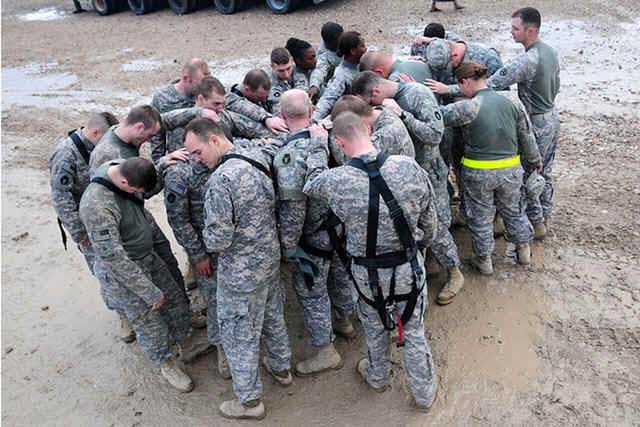
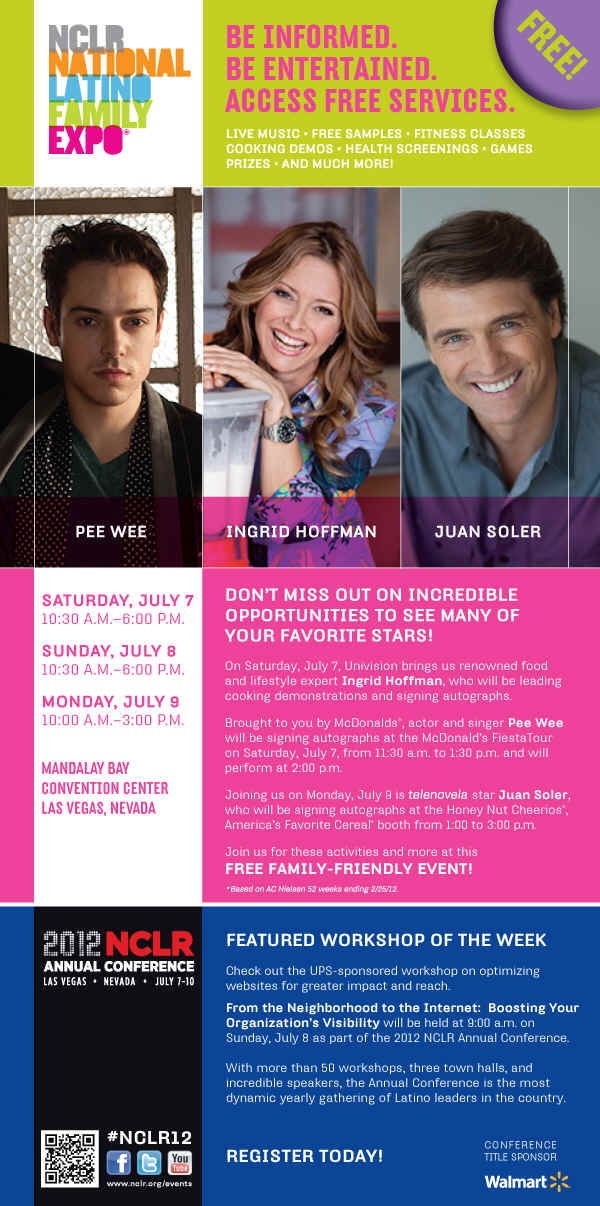
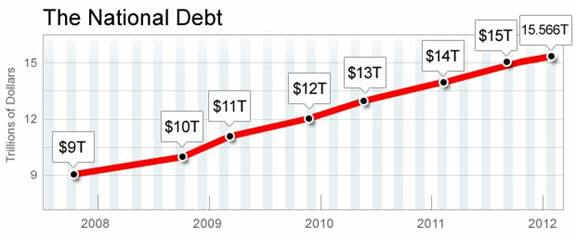
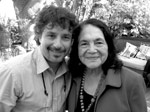
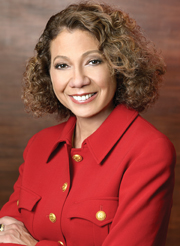
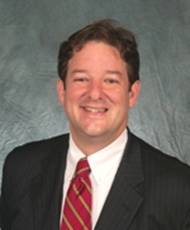
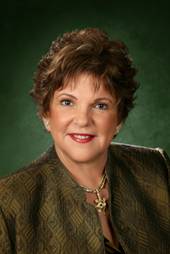
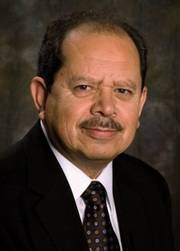
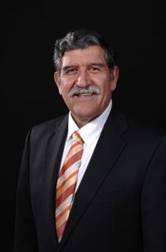
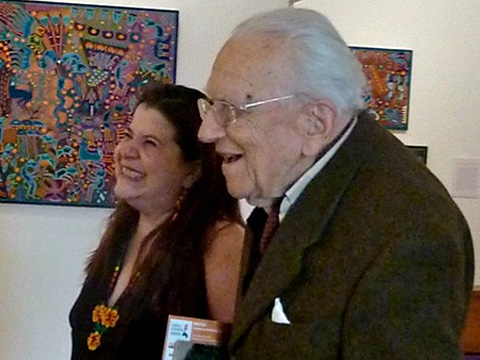
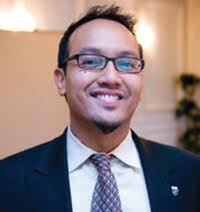
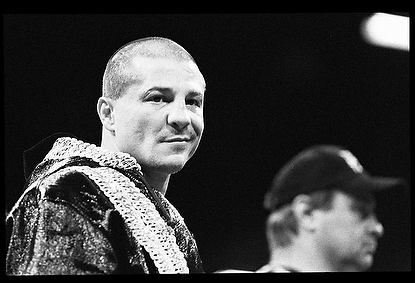
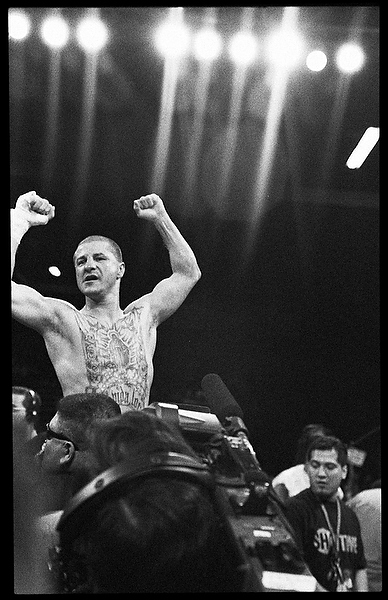 Destined
for the Boxing Hall of Fame, Tapia has fought 12 world champions
during his career, losing only to Barrera and Ayala. Though Foster was
the only undisputed world champ to come out of New Mexico, and the
only lineal champ (i.e. “the man who beat the man who beat the man .
. . .”), Tapia’s titles were in four weight divisions, from 112 to
126, while Foster reigned only at light-heavy.
Destined
for the Boxing Hall of Fame, Tapia has fought 12 world champions
during his career, losing only to Barrera and Ayala. Though Foster was
the only undisputed world champ to come out of New Mexico, and the
only lineal champ (i.e. “the man who beat the man who beat the man .
. . .”), Tapia’s titles were in four weight divisions, from 112 to
126, while Foster reigned only at light-heavy.
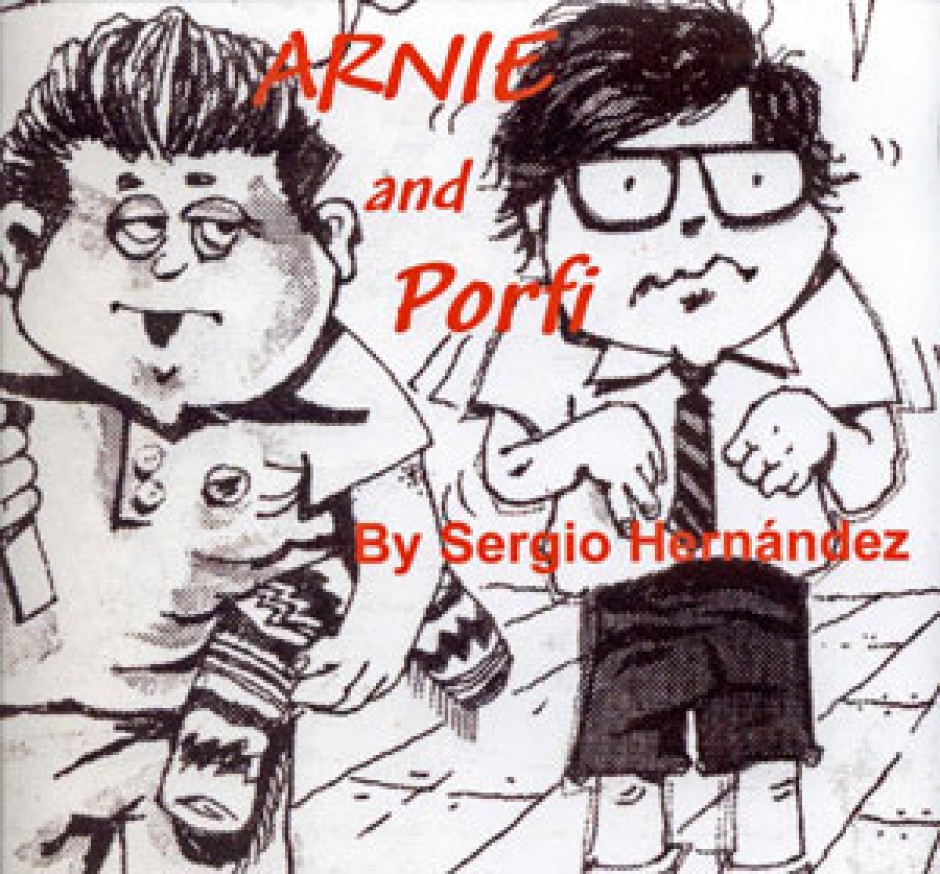


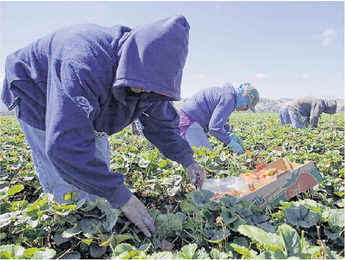
 ADF
attorney Jordan Lorence: "Americans in the marketplace should not
be subjected to legal attacks for simply abiding by their beliefs.
Should the government force a videographer who is an animal rights
activist to create a video promoting hunting and taxidermy? Of course
not -- and neither should the government force this photographer to
promote a message that violates her conscience."
Lorence goes on to say that because the constitution prohibits the
state from forcing unwilling artists to promote a message they
disagree with, ADF will appeal the decision to the New Mexico Supreme
Court.
ADF
attorney Jordan Lorence: "Americans in the marketplace should not
be subjected to legal attacks for simply abiding by their beliefs.
Should the government force a videographer who is an animal rights
activist to create a video promoting hunting and taxidermy? Of course
not -- and neither should the government force this photographer to
promote a message that violates her conscience."
Lorence goes on to say that because the constitution prohibits the
state from forcing unwilling artists to promote a message they
disagree with, ADF will appeal the decision to the New Mexico Supreme
Court.
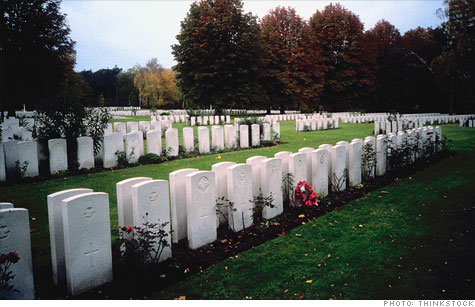
 A
Judeo-Christian law firm that fights for faith and freedom plans to
appeal a federal judge's decision to dismiss its constitutional
challenge to the U.S. government's bailout of the American
International Group (AIG).
A
Judeo-Christian law firm that fights for faith and freedom plans to
appeal a federal judge's decision to dismiss its constitutional
challenge to the U.S. government's bailout of the American
International Group (AIG). "Certainly
we know that if the federal government even gave a fraction of that
amount of money to a Christian or a Jewish religious activity, there's
no doubt in my mind the courts would strike that down and find it a
violation of the Establishment Clause," Muise offers. "But
yet here we've got billions of dollars going to support activities
that are promoting sharia law, Islamic law, and yet we have the Sixth
Circuit, at least one panel, saying that there isn't any
constitutional harm here sufficient to have standing."
"Certainly
we know that if the federal government even gave a fraction of that
amount of money to a Christian or a Jewish religious activity, there's
no doubt in my mind the courts would strike that down and find it a
violation of the Establishment Clause," Muise offers. "But
yet here we've got billions of dollars going to support activities
that are promoting sharia law, Islamic law, and yet we have the Sixth
Circuit, at least one panel, saying that there isn't any
constitutional harm here sufficient to have standing." 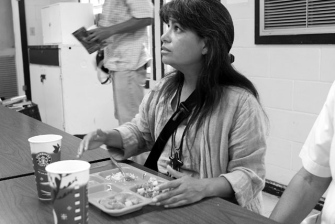
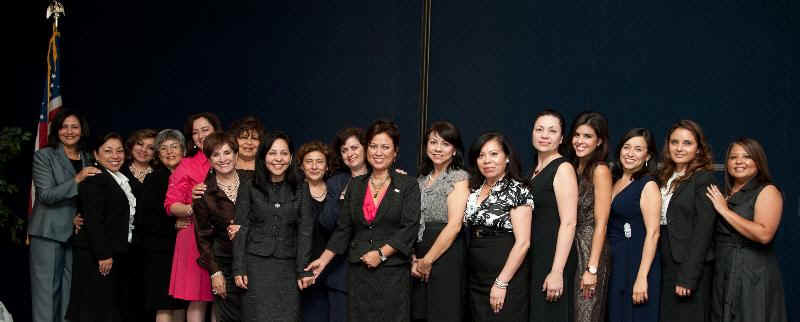
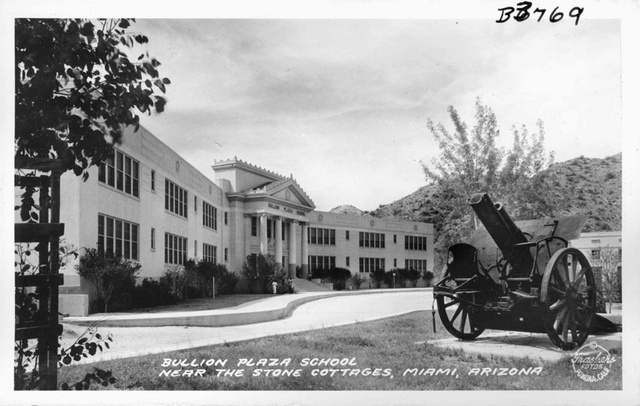
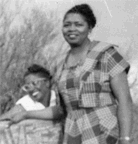
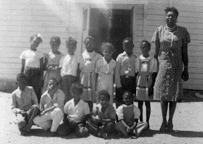 These
dedicated teachers withstood the inequities of segregated schools and
earned the love and respect of their African American students and
their families. They remained active in their teachers' union and
garnered the respect of their colleagues. When desegregation occurred,
they were caught up in a process of change and discrimination which
could have resulted in their teaching careers ending in Globe and
Miami. Through their own persistence and with assistance from the AEA,
they were able to continue to work in their chosen profession.
These
dedicated teachers withstood the inequities of segregated schools and
earned the love and respect of their African American students and
their families. They remained active in their teachers' union and
garnered the respect of their colleagues. When desegregation occurred,
they were caught up in a process of change and discrimination which
could have resulted in their teaching careers ending in Globe and
Miami. Through their own persistence and with assistance from the AEA,
they were able to continue to work in their chosen profession.
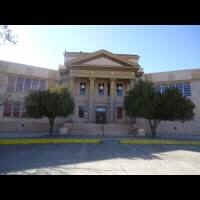


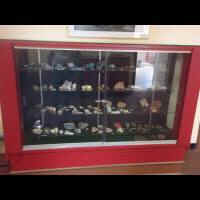


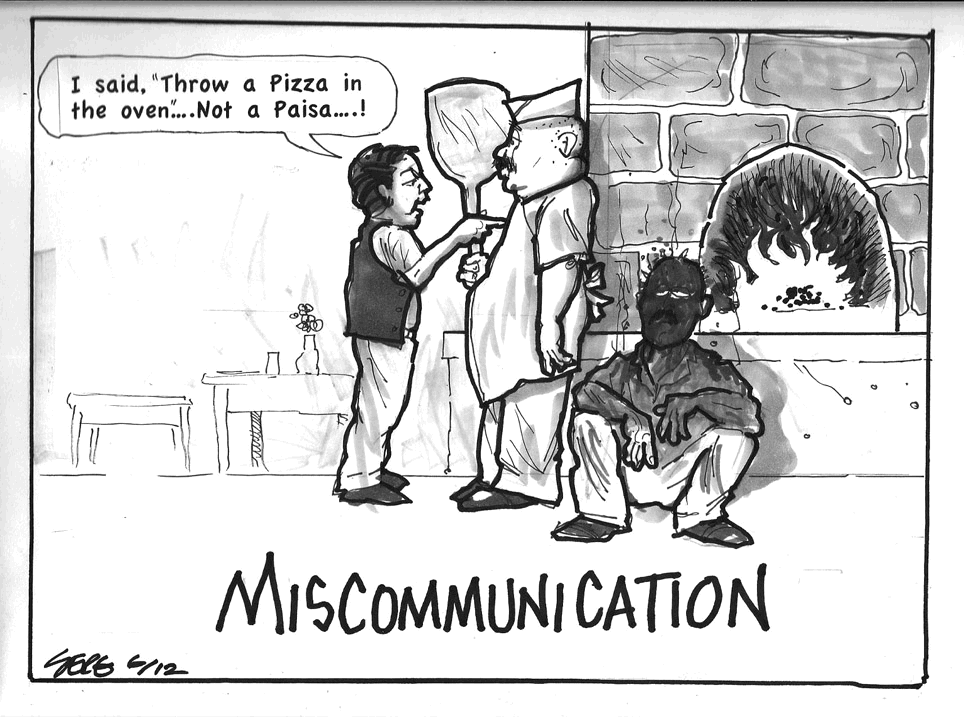
 At
the NAHP Convention October 18-20, 2012 in San Diego awards will be
presented to publishers, journalists, editors, art directors &
marketing professionals. The National Association of Hispanic
Publications' José Martí Publishing Awards have grown over the past
25 years to be the most important awards for Hispanic newspapers,
magazines, and now websites.
At
the NAHP Convention October 18-20, 2012 in San Diego awards will be
presented to publishers, journalists, editors, art directors &
marketing professionals. The National Association of Hispanic
Publications' José Martí Publishing Awards have grown over the past
25 years to be the most important awards for Hispanic newspapers,
magazines, and now websites. 
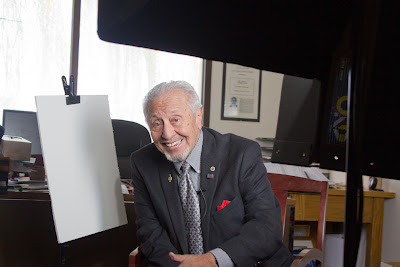
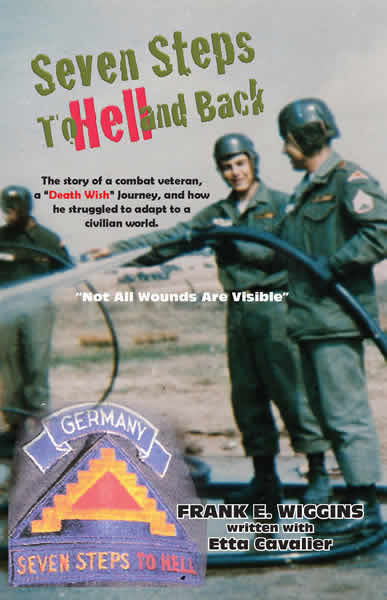
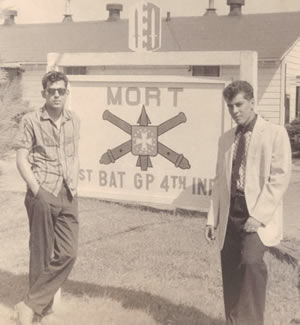
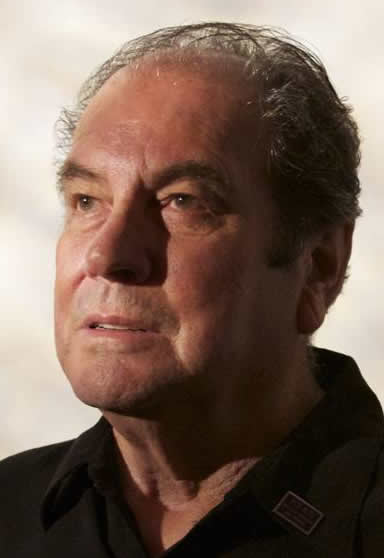 Frank
Wiggins is a Cold War era veteran who has suffered from PTSD since his
separation from the military in 1960. He considers himself very lucky
to have survived many years of a destructive lifestyle. Since a young
age he discovered he had a photographic memory and in the military, he
became an exceptionally well trained soldier.
Frank
Wiggins is a Cold War era veteran who has suffered from PTSD since his
separation from the military in 1960. He considers himself very lucky
to have survived many years of a destructive lifestyle. Since a young
age he discovered he had a photographic memory and in the military, he
became an exceptionally well trained soldier.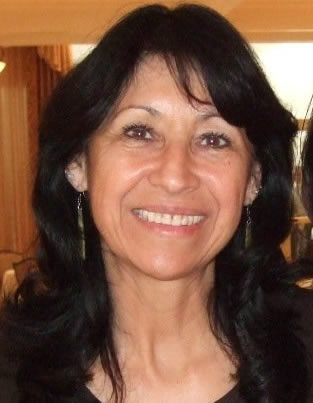

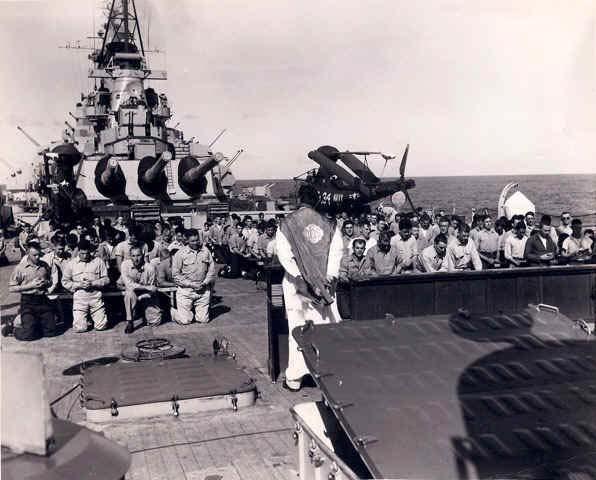
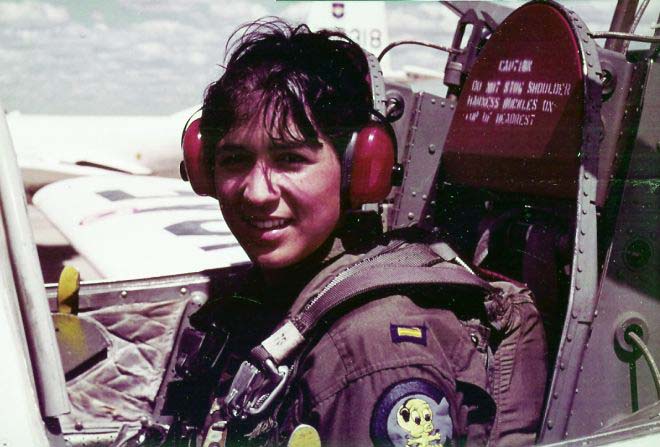
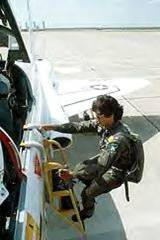


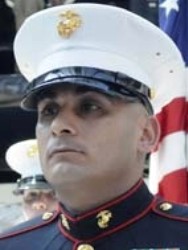
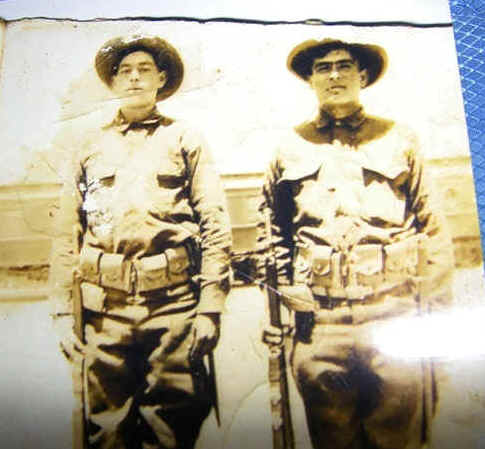
 They
fought in WWI, according to family stories, he served in France.
Uncle Francisco was injured and received a purple heart medal.
He is buried at Roy N.M cemetery in the Veterans section.
They
fought in WWI, according to family stories, he served in France.
Uncle Francisco was injured and received a purple heart medal.
He is buried at Roy N.M cemetery in the Veterans section.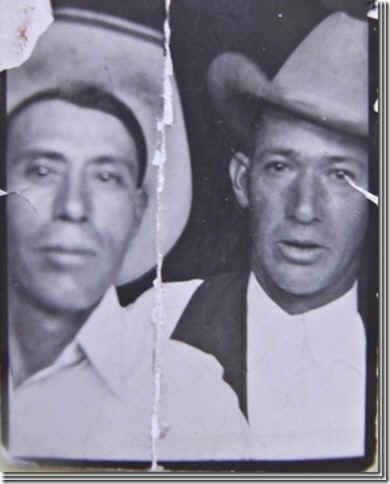
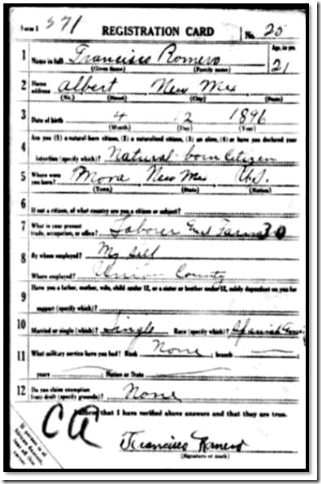
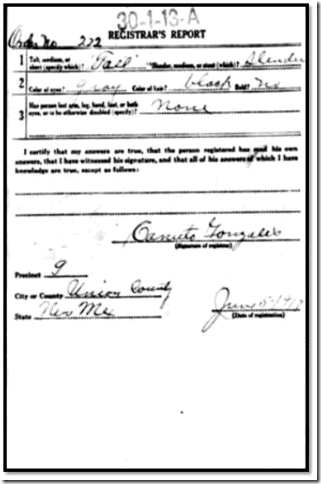

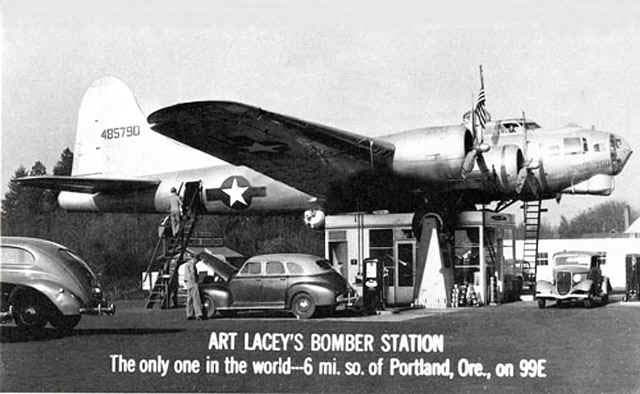
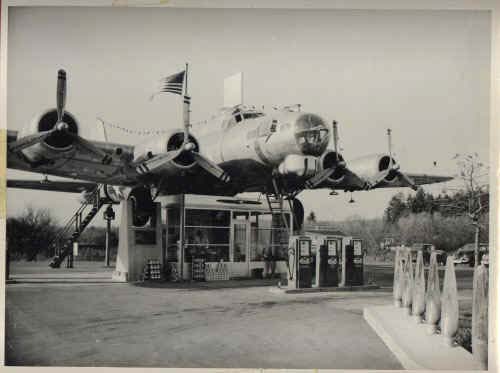
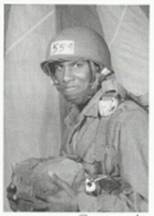

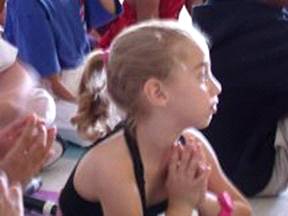


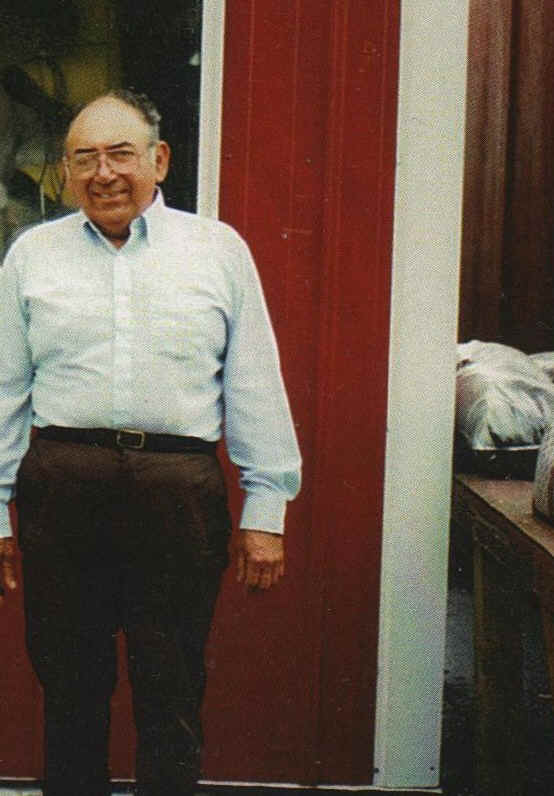
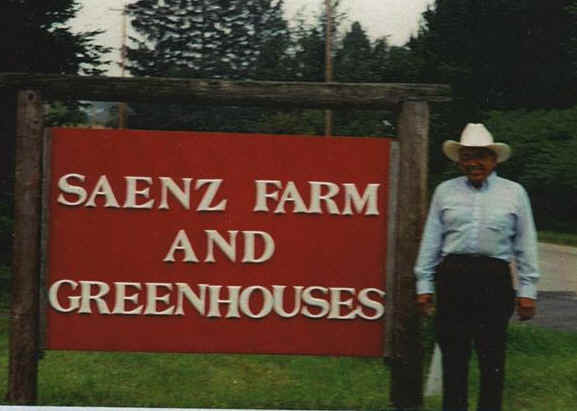
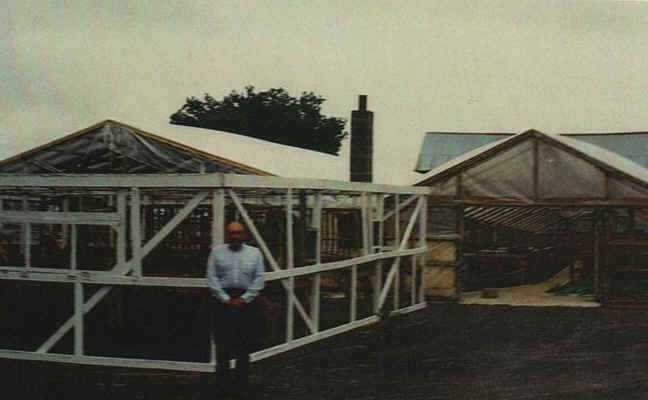
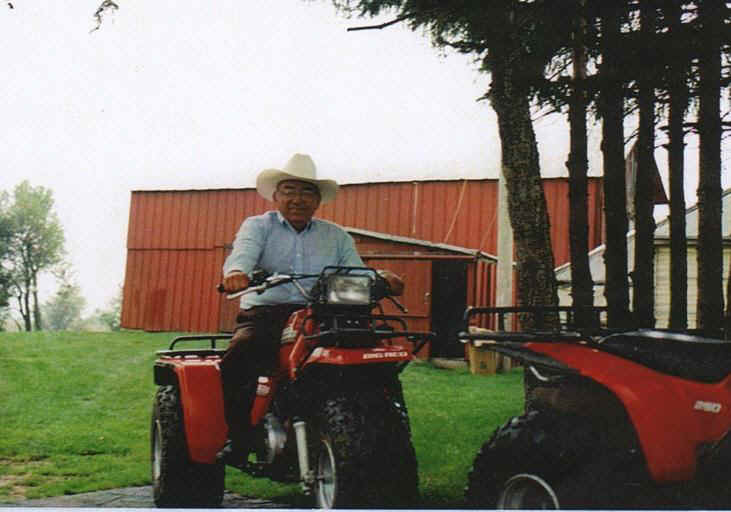

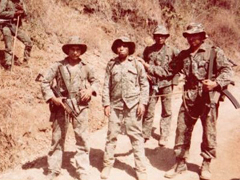


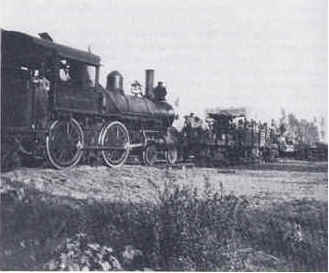
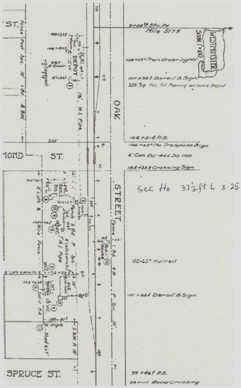
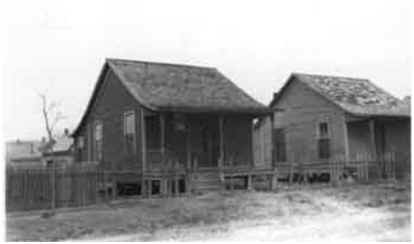
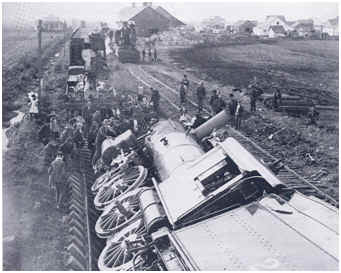
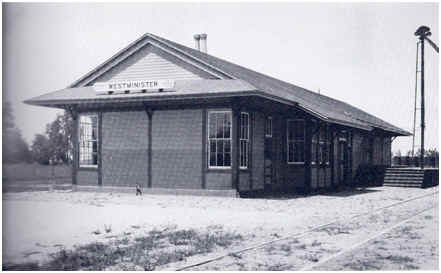
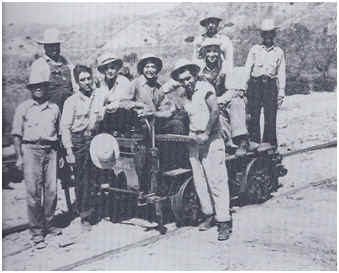
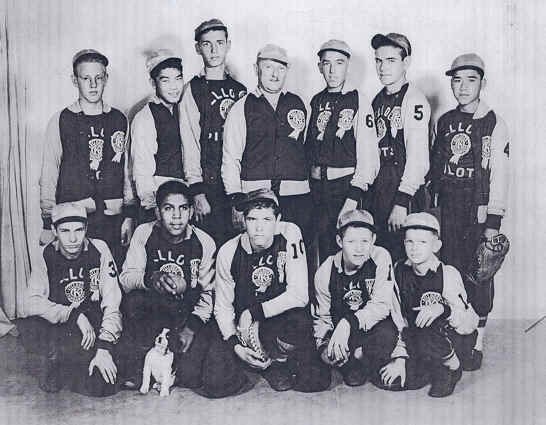
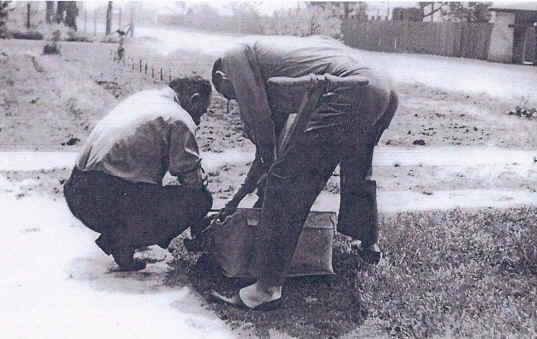
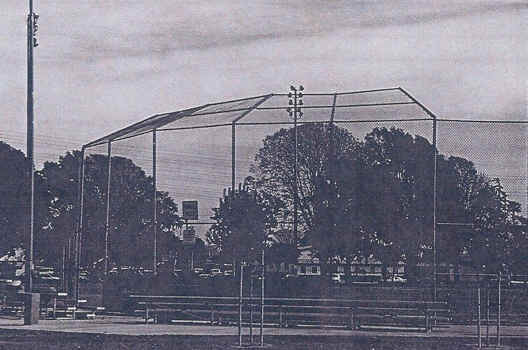
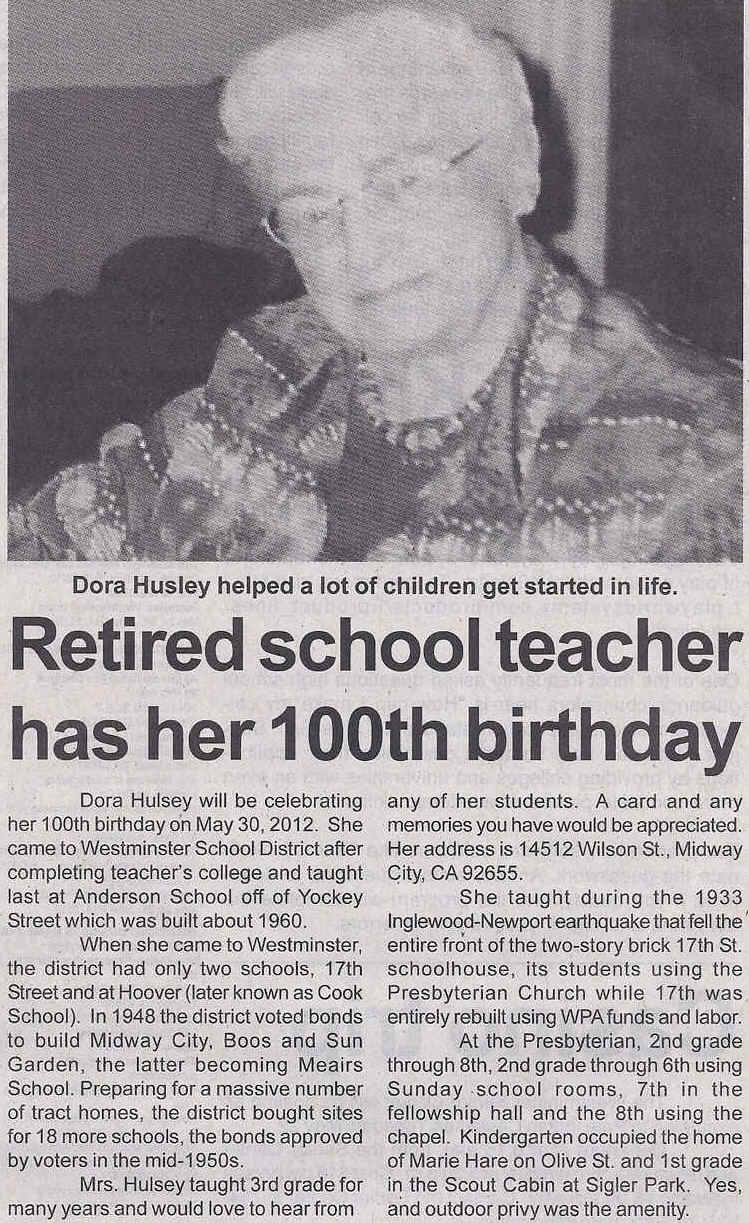


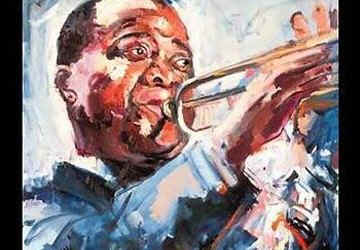 In
commemoration of Louisiana's 200th anniversary as a
state, which was celebrated back on April 30, Rolling
Stone Magazine put out a piece today,
In
commemoration of Louisiana's 200th anniversary as a
state, which was celebrated back on April 30, Rolling
Stone Magazine put out a piece today, 
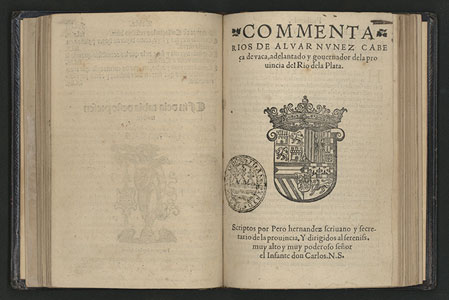
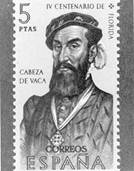
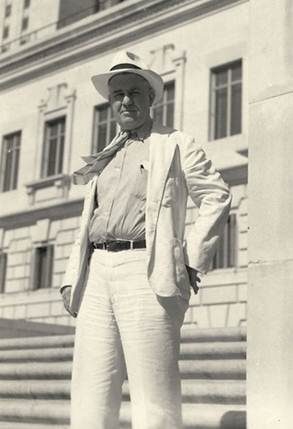
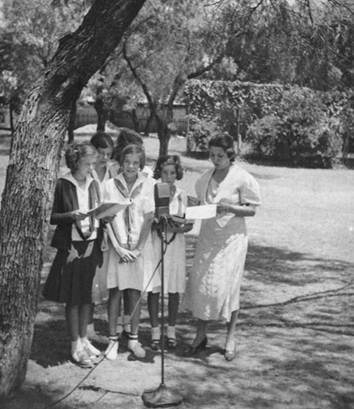





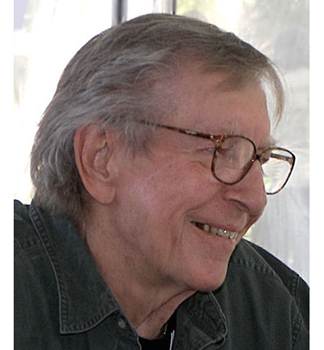
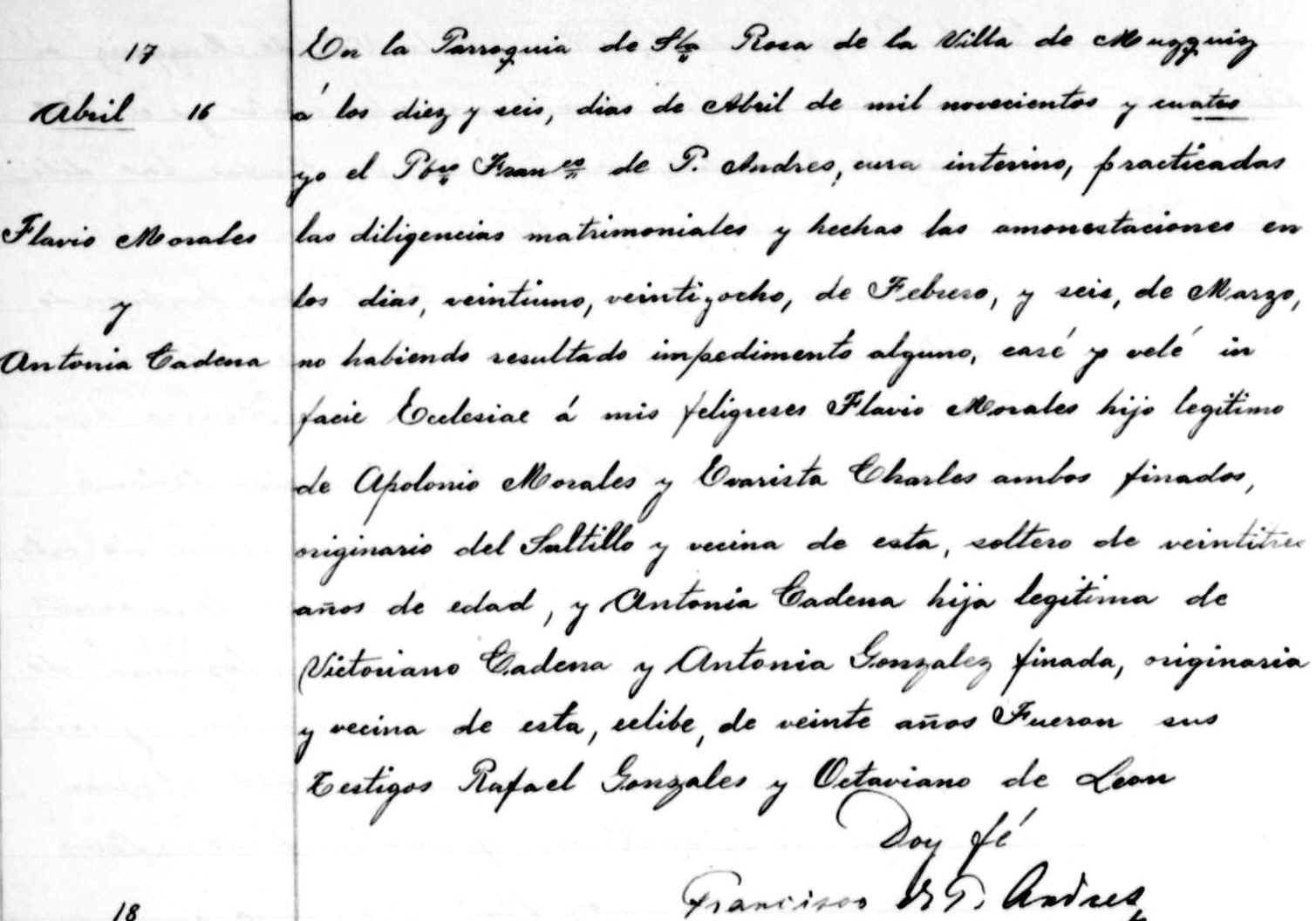
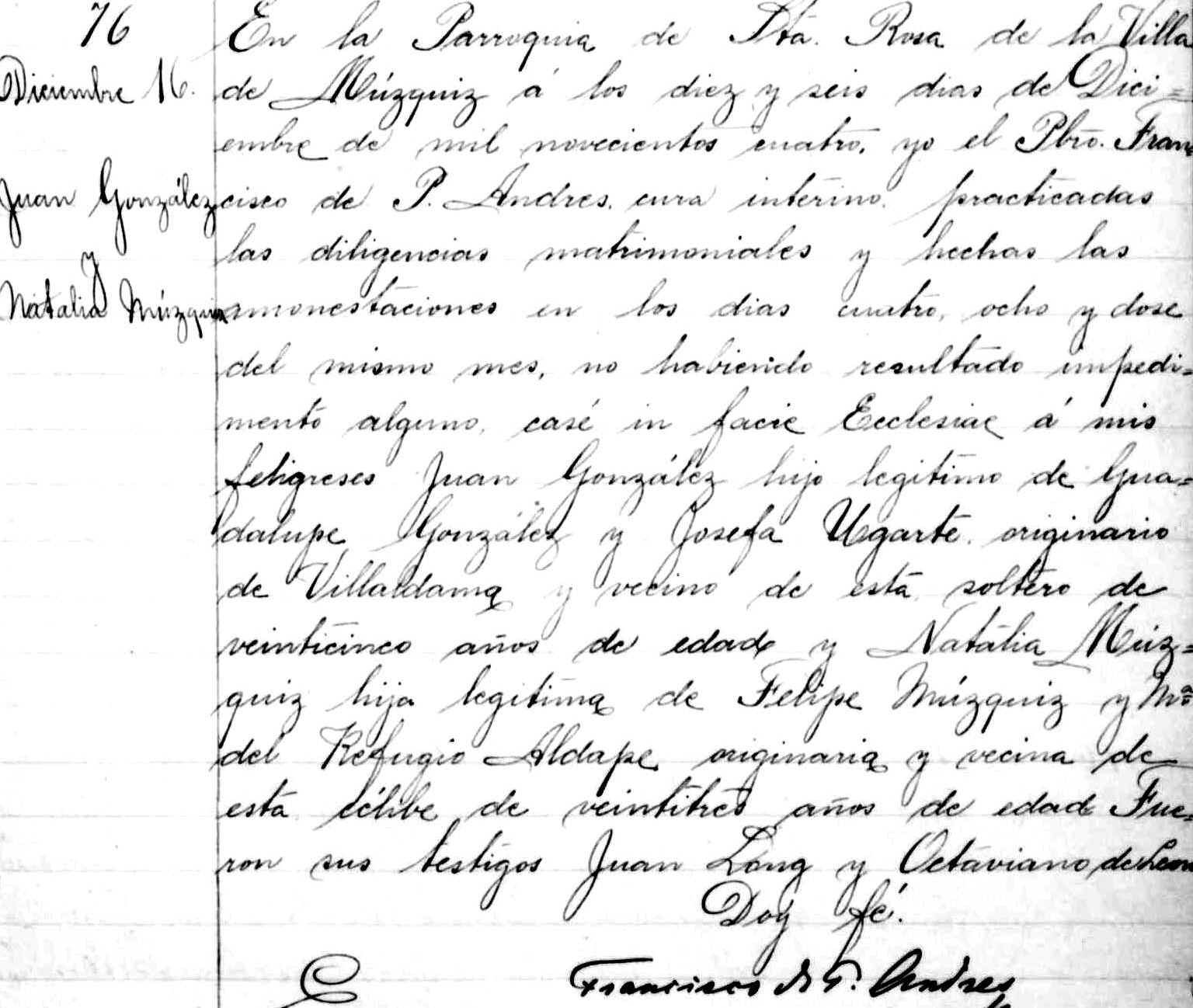

 Many
slaves, for example, ran away to the Union Army. Hundreds fled to Camp
Parapet, a fortification just above the city, where the abolitionist
commanding officer, Brig. Gen. John W. Phelps, welcomed them. Even
those who were thought to be most loyal to their owners ran off.
“There are many instances in which house-servants, those who have
been raised by people, have deserted them,” complained Clara
Solomon, a teenager in the city.
Many
slaves, for example, ran away to the Union Army. Hundreds fled to Camp
Parapet, a fortification just above the city, where the abolitionist
commanding officer, Brig. Gen. John W. Phelps, welcomed them. Even
those who were thought to be most loyal to their owners ran off.
“There are many instances in which house-servants, those who have
been raised by people, have deserted them,” complained Clara
Solomon, a teenager in the city.



